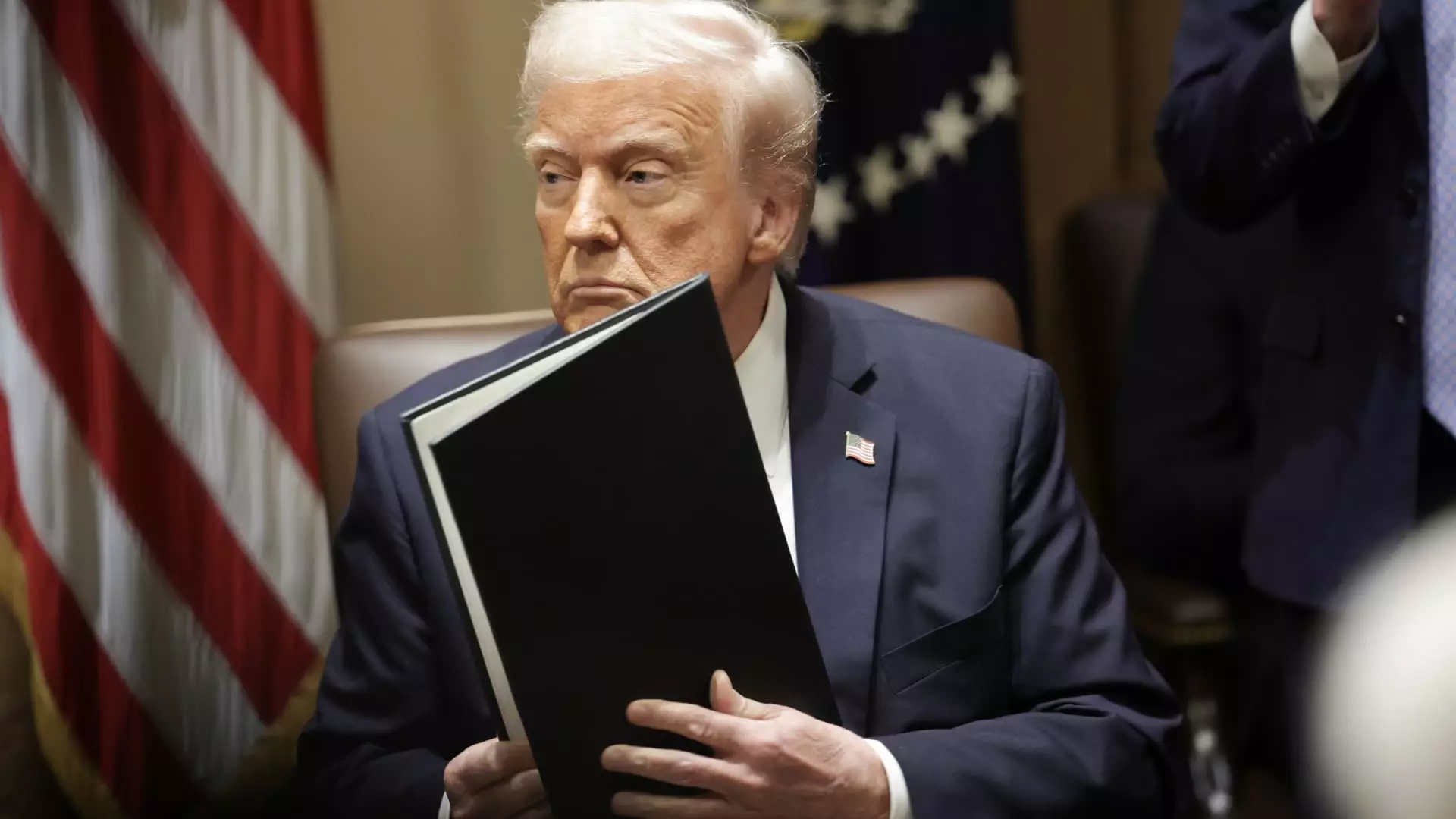In an era punctuated by unpredictability, President Donald Trump’s impending announcement of new auto tariffs has ignited a storm of anxiety among economists, investors, and business leaders alike. Scheduled to unveil the details on Wednesday, the atmosphere surrounding this decision is steeped in uncertainty. Trump’s approach to trade has often been characterized by erratic policy shifts, which have historically sent shockwaves through the stock market. The announcement has already pushed stocks to session lows, sparking fears that this latest round of tariffs could be the catalyst for a broader economic downturn.
The Strain on International Relations
An underlying consequence of Trump’s tariff strategy is the potential for straining international relations. The idea of imposing heavy tariffs on foreign trading partners, particularly in the auto industry, raises the question of how other countries will respond. While Trump promotes these tariffs as a necessary measure to protect American jobs, the wider implications could lead to retaliatory measures that further escalate trade tensions. It’s easy to envision a cycle of tit-for-tat tariffs, which could close doors to diplomatic and commercial engagements that are pivotal for fostering global cooperation.
A Lingering Cloud of Inconsistency
The unsettling reality of Trump’s trade policies is not merely in their inception but in their execution—or lack thereof. His penchant for shifting positions has left many stakeholders in a state of bewilderment. Just last week, Trump floated the idea of “flexibility” in the forthcoming tariffs, moving away from a hard-line stance to a more lenient approach. This inconsistency is not only damaging to investor confidence but also undermines the very rationale behind imposing tariffs in the first place. Why should businesses invest or plan for the future if the rules of the game are subject to abrupt changes?
The Myth of Liberation Day
April 2 has been dubbed “liberation day” by Trump, who bills it as a seismic shift in trade policy. However, the reality may unfold quite differently. The term “liberation” is misleading; instead of liberating American consumers and workers, these tariffs may ensnare them in a web of higher prices and economic isolationism. The original concept of reciprocal tariffs is not merely a blunt instrument but carries the risk of deepening existing divides in trade relationships. Moreover, with Treasury Secretary Scott Bessent suggesting that countries could negotiate to sidestep these tariffs, it adds another layer of complexity. Who gets to negotiate? And under what terms?
The Threat to the American Consumer
Ultimately, it’s the American consumer who stands to bear the brunt of these tariffs. By implementing new import taxes on auto manufacturers, the administration risks raising the prices of vehicles for everyday Americans. The irony is palpable: while politicians often tout their commitment to protecting U.S. workers, in reality, such tariffs may risk jobs in the sectors reliant on affordable imports. In essence, the rhetoric of protectionism may lead to a less competitive auto market, pushing costs upward and squeezing the middle class at a time when economic stability is paramount.
The forthcoming auto tariffs represent a complex tapestry woven from threads of uncertainty, inconsistency, and potential economic fallout. As we brace ourselves for the announcements to come, one thing is certain: the stakes have never been higher.


Leave a Reply